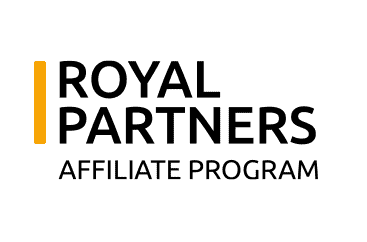Digital Video Advertising Surges: The Fastest-Growing Format in 2024’s Digital Ad Renaissance

Digital video has emerged as the fastest-growing advertising format in the U.S. digital ad market, according to new data released in the IAB Internet Advertising Revenue Report conducted by PwC. The format saw an impressive 19.2% year-over-year growth in 2024, reaching $62.1 billion and now accounting for 24.0% of total digital advertising revenue.
This robust performance comes amid a broader resurgence in digital advertising, which reached a record $258.6 billion in 2024, representing a 14.9% increase from the previous year. The report, released today, provides a comprehensive view of the digital advertising landscape and highlights the shifting priorities of advertisers in an increasingly video-centric digital environment.
Video Outpaces Other Major Formats
While all major advertising formats experienced growth in 2024, digital video’s 19.2% increase outpaced other significant categories. Search advertising, which remains the largest segment with a 39.8% market share, grew by 15.9% to reach $102.9 billion. Display advertising rebounded with a 12.4% year-over-year increase, reaching $74.3 billion, a significant improvement from its 4.0% growth in 2023.
The report emphasizes that video’s strong performance reflects a fundamental shift in advertiser strategy toward immersive, high-impact formats designed to drive engagement and brand awareness. This trend aligns with broader changes in consumer media consumption habits, particularly the continued migration toward streaming platforms and short-form video content.
Streaming and CTV Drive Video Growth
The report identifies several factors contributing to video’s accelerated growth. Online TV advertising grew by 16.5% in 2024, according to data from PwC’s Global Entertainment & Media Outlook referenced in the report. This growth coincides with the proliferation of ad-supported streaming tiers from major platforms like Netflix, Disney+, and Amazon Prime Video, which have increased available inventory while creating new opportunities for brands to reach engaged audiences.
Live sports streaming is also cited as a significant driver of this shift, with major digital platforms securing exclusive sports rights that traditionally belonged to broadcasters. This transition is accelerating the migration of ad dollars away from linear TV toward digital video environments, particularly connected TV (CTV).
Implications for Affiliates and Affiliate Programs
For affiliates and affiliate program owners, the substantial growth in digital video presents significant opportunities within the evolving digital advertising ecosystem. The report highlights several trends that have direct implications for the affiliate marketing space: See: Video Content Ideas For Affiliates
The shift toward “commerce-led ecosystems” noted in the report suggests that content is increasingly becoming a central touchpoint for commerce. This trend is particularly relevant for affiliates, as the rise of “shoppable media” and “embedded storefronts” creates new opportunities to integrate affiliate links and promotions directly within video content.
Additionally, the report notes that advertisers are now “not only looking for where audiences are, but where commerce can happen,” focusing on channels that “enable frictionless shopping experiences.” For affiliate program owners, this signals the importance of developing video-friendly tools and resources that help creators seamlessly incorporate affiliate offers into their content.
The evolution of the creator economy, as detailed in the report, also has significant implications for the affiliate sector. Brands are “moving away from one-off influencer collaborations and focusing on long-term ambassador partnerships,” while creators are “diversifying beyond social media, expanding into long-form content, podcasting, newsletters, and direct-to-consumer (DTC) brands.” This shift presents affiliate programs with opportunities to establish deeper, more strategic relationships with video creators who can drive consistent conversions over time.
As the report states, “platforms are increasingly prioritizing creator monetization, offering better revenue-sharing models and tools for direct audience monetization.” Affiliate programs that adapt to this landscape by developing video-specific commission structures and promotional assets will be better positioned to capitalize on this growing format.
Programmatic Continues to Expand
The rise in digital video advertising correlates with the continued growth of programmatic advertising, which increased by 18.0% to reach $134.8 billion in 2024. The report indicates that 61% of these revenues are attributed to open real-time bidding marketplaces, while the remaining 39% come from programmatic direct channels including private marketplaces, preferred deals, or automated guaranteed transactions.
This trend underscores the industry’s growing preference for automated, data-driven ad placements that enable real-time optimization across video formats.
Looking Ahead: Video’s Role in the Evolving Digital Landscape
The report suggests that digital video’s strong performance is part of a broader transformation in how brands engage with consumers. As streaming services expand their ad-supported models and short-form video continues to dominate consumer engagement, advertisers are increasingly prioritizing video in their media mix.
“The continued expansion of dynamic, immersive ad formats” is highlighted in the report as brands seek “high engagement environments to connect with consumers.” This shift reflects both changing media consumption patterns and the evolving capabilities of digital platforms to deliver more targeted, relevant video experiences.
For affiliates and program owners alike, this underscores the importance of incorporating video into their strategic planning, as the format continues to capture a growing share of both consumer attention and advertising investment.
The IAB Internet Advertising Revenue Report is based on data directly reported to PwC from companies selling advertising on the internet, as well as publicly available corporate data, making it one of the most comprehensive analyses of the digital advertising market.
Editor’s Note: The IAB Internet Advertising Revenue Report was conducted by PwC and commissioned by the Interactive Advertising Bureau (IAB). The 2024 full-year results were released in April 2025.






